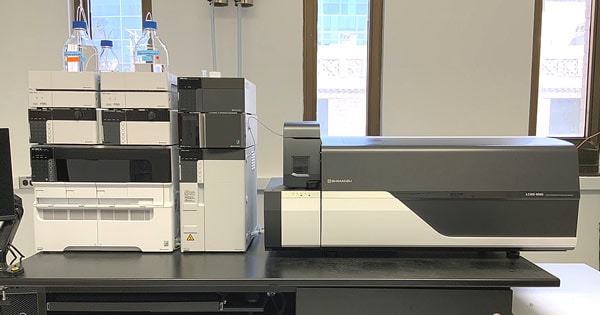May 6, 2021 | News & Notices Shimadzu Scientific Instruments to Collaborate on Anti-aging Research at Washington University School of Medicine
Shimadzu Scientific Instruments, Inc. and Washington University School of Medicine in St. Louis, MO have entered into a joint research agreement to apply mass spectrometry technology toward the development of tools to quantitate nicotinamide mononucleotide (NMN) and related compounds in biological specimens. The key objective of the collaboration, with Professor Shin-ichiro Imai, MD, PhD, in the School of Medicine’s Department of Developmental Biology and Department of Medicine, will be to deepen the understanding of the systemic regulation of aging and longevity in mammals.
NMN is a key nicotinamide adenine dinucleotide (NAD+) intermediate*1 in the major NAD+ biosynthetic pathway. In 2011, Dr. Imai’s lab demonstrated that supplementation of NMN dramatically ameliorates dysfunctions in glucose metabolism in high fat diet- or aging-induced type 2 diabetic model mice. In 2016, Dr. Imai’s team also showed that in healthy aging mice, NMN, with no obvious toxicity or deleterious effects, suppresses age-associated body weight gain, enhances energy metabolism, promotes physical activity, enhances insulin sensitivity and plasma lipid profiles, and ameliorates eye function and other age-associated pathophysiology. Most recently, the team led by Drs. Samuel Klein and Imai at Washington University School of Medicine, published results in Science from the first clinical trial on NMN, demonstrating that NMN significantly improves insulin sensitivity and signaling in skeletal muscle*2. While additional trials are necessary, the new findings suggest that NMN has preventive and therapeutic potential for age-associated functional decline and disease conditions in humans.
“Although NMN and NMN-related compounds in mice can be quantified using LC-UV, the concentrations are one or more orders lower in human blood. LC-MS would be necessary to accurately quantify NMN in human blood,” said Masayuki Nishimura, Ph.D., Director of New Strategy Department, Shimadzu Scientific Instruments. “This collaboration will integrate WUSM's leading anti-aging researchers and clinical resources with Shimadzu's LC-MS technologies to establish a reliable quantitation method of NMN and NMN-related compounds in biological samples. As a global leader in aging and longevity research, Prof. Imai is an ideal collaborator to advance the application of mass spectrometry in anti-aging research.”
“In collaboration with Shimadzu, we want to develop an accurate, reproducible, mass spectrometry-driven methodology for NMN and NMN-related compounds in biological samples. This work is critical for understanding the therapeutic potential of NMN and related compounds that will be further evaluated in clinical trials,” said Dr. Imai.
About Shimadzu Scientific Instruments, Inc.
Shimadzu Scientific Instruments (SSI) is the North American subsidiary of Shimadzu Corporation’s Analytical and Measuring Division. Headquartered in Columbia, Maryland, SSI offers a comprehensive portfolio of analytical and testing solutions for a broad range of applications in science and industry. SSI maintains a network of ten regional offices strategically located across the United States, with experienced technical specialists, service providers and sales engineers situated throughout the country. In addition, SSI operates a Solution Center, designed to enable applications development, and an Innovation Center that houses a team of scientists whose goal is to develop close collaborations with universities, government agencies and industry centers.
Visit https://www.ssi.shimadzu.com/ to learn more.
About Shin-ichiro Imai
Dr. Imai is Professor of Department of Developmental Biology and Department of Medicine at Washington University School of Medicine in St. Louis, MO. His research focuses on understanding the systemic regulation of aging and longevity in mammals and translate that knowledge into an effective anti-aging intervention that makes our later lives as healthy and productive as possible (“productive aging”).
Visit https://imailab.wustl.edu/ to learn more.
*1 Compounds that appear during the synthetic pathway to the target compound
*2 https://doi.org/10.1126/science.abe9985

LCMS-8060 using for joint research with Washington University School of Medicine


